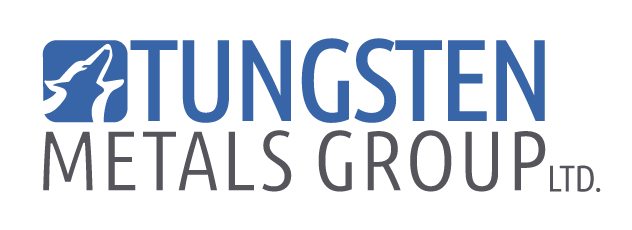Tungsten's Contribution to Creep Resistance in Fe-Based Superalloys
For materials used in high-temperature settings like gas turbines, jet engines, and nuclear reactors, creep resistance is an essential characteristic. Tungsten is frequently added to Fe based superalloys to increase their creep resistance. These alloys are well known for their exceptional strength and oxidation resistance at high temperatures.
1. Understanding Creep
The propensity of a material to gradually and irreversibly distort when subjected to mechanical stress at elevated temperatures is known as creep. This process, which causes the material to gradually elongate or deform over time, is caused by the diffusion of atoms inside the crystal lattice structure.
2. The Role of Tungsten
Tungsten is essential for enhancing the creep resistance of iron-based superalloys and contributes to the material's resistance to creep deformation by reinforcing the grain boundaries, generating stable carbides, and preventing the passage of dislocations and atoms. Below is a list of favourable qualities which tungsten provides to Fe based superalloys that aid with creep resistance:
High-Temperature Strength: Tungsten is essential for demanding applications in gas turbines and aircraft propulsion systems because it forms stable carbides and solid solutions inside the microstructure of fero alloys, improving their high-temperature strength.
Oxidation and Corrosion Resistance: The oxidation and corrosion resistance of Fe-based alloys is facilitated by tungsten's capacity to produce protective oxide coatings on their surface, thereby averting degradation in harsh settings like corrosive chemicals or high-temperature combustion gases.
Wear Resistance: Because hard tungsten carbide precipitates form within the material, tungsten-containing Fe based superalloys show enhanced wear resistance. This makes them ideal for applications involving abrasive wear, such as industrial machinery, wear-resistant coatings, and cutting tools.
Thermal Stability: By strengthening iron-based superalloys' resistance to thermal fatigue and expansion, tungsten helps them retain their mechanical qualities and dimensional stability over a broad temperature range, making them ideal for high-temperature settings and thermal cycling applications.
3. Mechanisms for Increasing Creep Resistance
Grain Boundary Strengthening: The tungsten atoms efficiently reinforce the material against creep deformation by segregating to the grain boundaries, where they obstruct the migration of dislocations and inhibit grain boundary sliding.
Precipitation Hardening: Within the alloy's microstructure, tungsten can precipitate as carbides and other materials, adding more mechanisms for strengthening and enhancing creep resistance.
Strengthening via Solid Solution: When tungsten atoms dissolve into the iron matrix, a solid solution is formed that strengthens the alloy overall and improves its resistance to creep deformation.
4. Useful Applications for Tungsten and Fe-Based Superalloys
Parts of a gas turbine engine: Superalloys based on iron and modified with tungsten are widely utilised in the production of high-temperature components such as vanes and turbine blades, where exceptional creep resistance is necessary to guarantee long-term dependability and performance.
Aerospace industries: Tungsten-enhanced superalloys are essential in high-performance aerospace components that are subjected to severe mechanical loads and temperatures, such as aircraft engines and rocket propulsion systems.
Nuclear Applications: Tungsten alloys are crucial in nuclear applications because of their capacity to tolerate high temperatures and radiation damage. They help keep reactor integrity intact by being utilised in nuclear fuel rods and cladding. Tungsten is also a highly effective radiation shielding material that ensures longevity and safety in nuclear situations due to its density and creep resistance.
Electrical Applications: For many applications involving high temperatures, tungsten alloys are essential. They resist the extreme heat produced during X-ray production in X-ray tube filaments. Furthermore, they are perfect for use as electrodes in welding and cutting applications due to their great temperature tolerance.
Industrial Furnace Components: Due to its high melting point, tungsten is ideal for applications involving high temperatures. It is utilised in crucibles for melting and casting high-temperature metals as well as heating components for furnaces that run at extremely high temperatures.
5. Technological Advancements
Modern developments in the field of Fe based superalloys, especially those including tungsten or ferrotungsten, have occurred recently that directly impact the effects of creep resistance. Among the most noteworthy developments are:
Nanostructured Alloys: By increasing the grain structure at the nanoscale, nanostructuring techniques increase the mechanical qualities, like creep resistance, and offer better performance in harsh environments.
Multicomponent Alloys: Increasing the mechanical strength and thermal stability of an alloy is essential for improving creep resistance. This can be achieved by incorporating various alloying elements and optimising composition and processing conditions.
High-Entropy Alloys (HEAs): Because of their exceptional stability and performance in high-temperature environments, HEAs—especially those containing tungsten—are being researched for high-temperature applications where creep resistance is essential.
Computational modeling and simulation: These methods enable scientists to forecast and enhance an alloy's behaviour under a range of circumstances, including creep. This makes it easier to create alloys with specific characteristics and enhanced resistance to creep.
Functional Gradient Materials (FGMs): By offering a progressive shift in composition and properties throughout the material, FGMs have the potential to improve mechanical and thermal properties, including creep resistance.
The development of next-generation Fe-based superalloys has advanced significantly with these developments, opening the door for creative solutions in the automotive, aerospace, energy, and other high-performance industries. The frontiers of materials science and engineering are being pushed by ongoing research, which is fueling new developments and uses in this fascinating area.
Enhancing creep resistance and prolonging the service life of components working at high temperatures are two major advantages of tungsten incorporation into Fe-based superalloys. Comprehending the methods via which tungsten enhances creep resistance offers significant insights for the creation of cutting-edge materials customised to satisfy the requirements of contemporary engineering applications.


